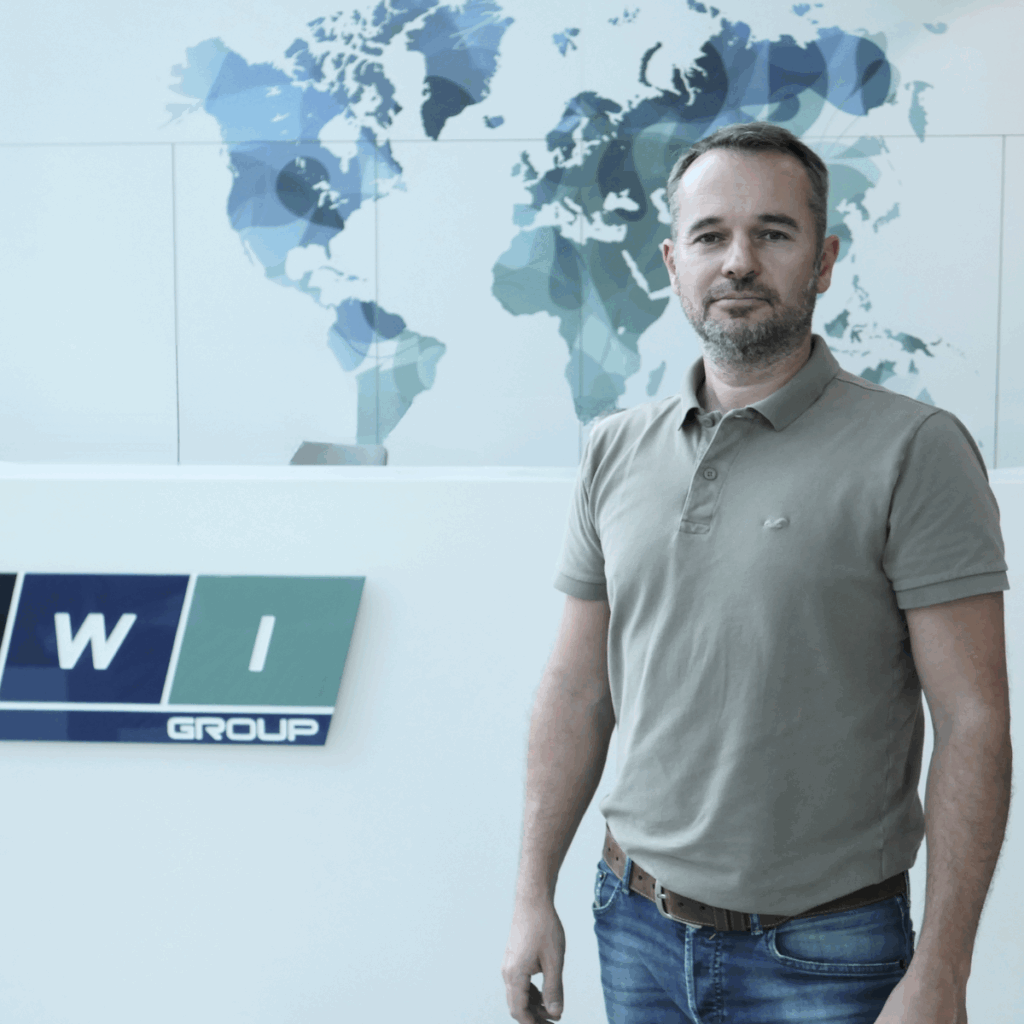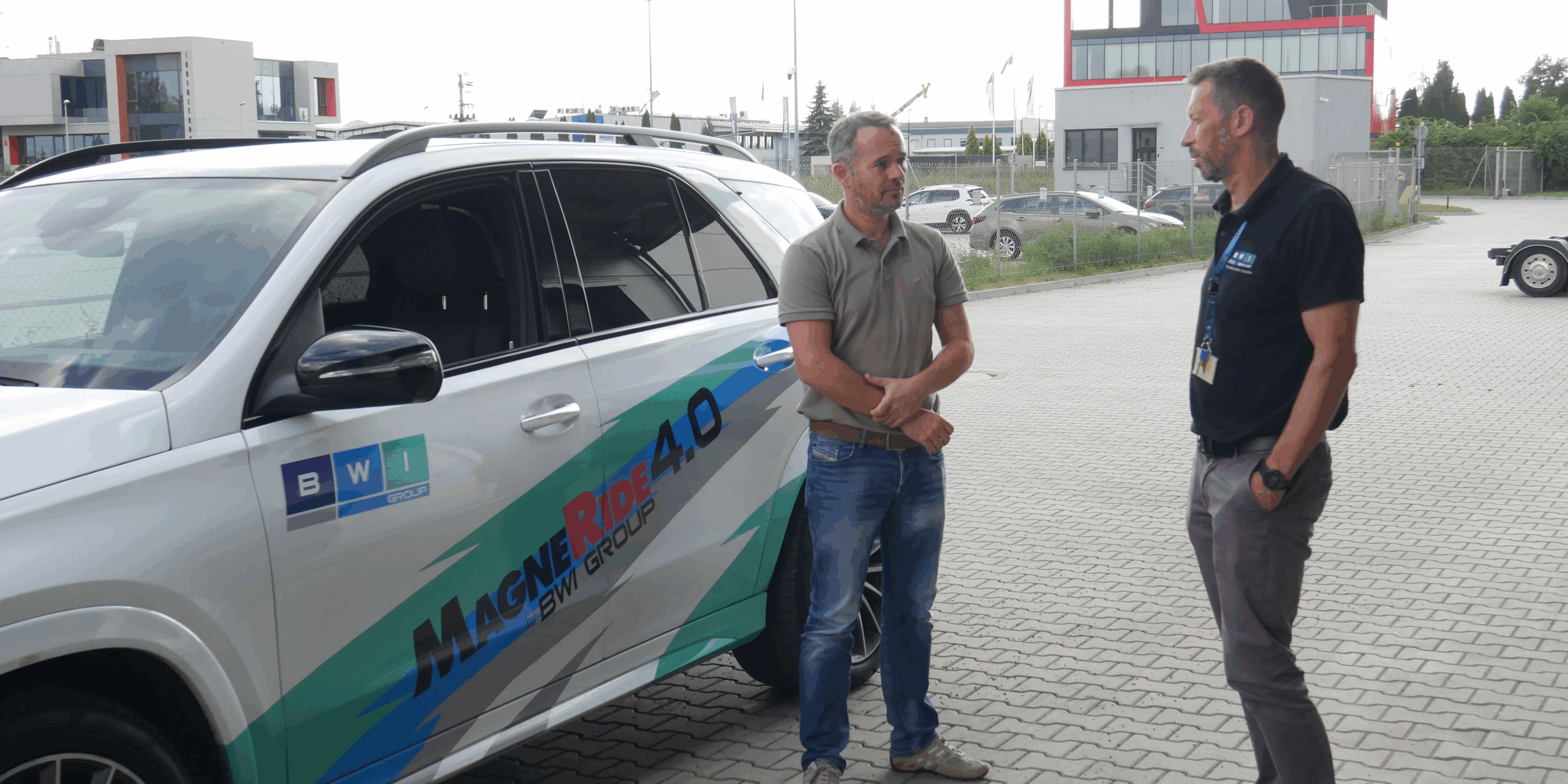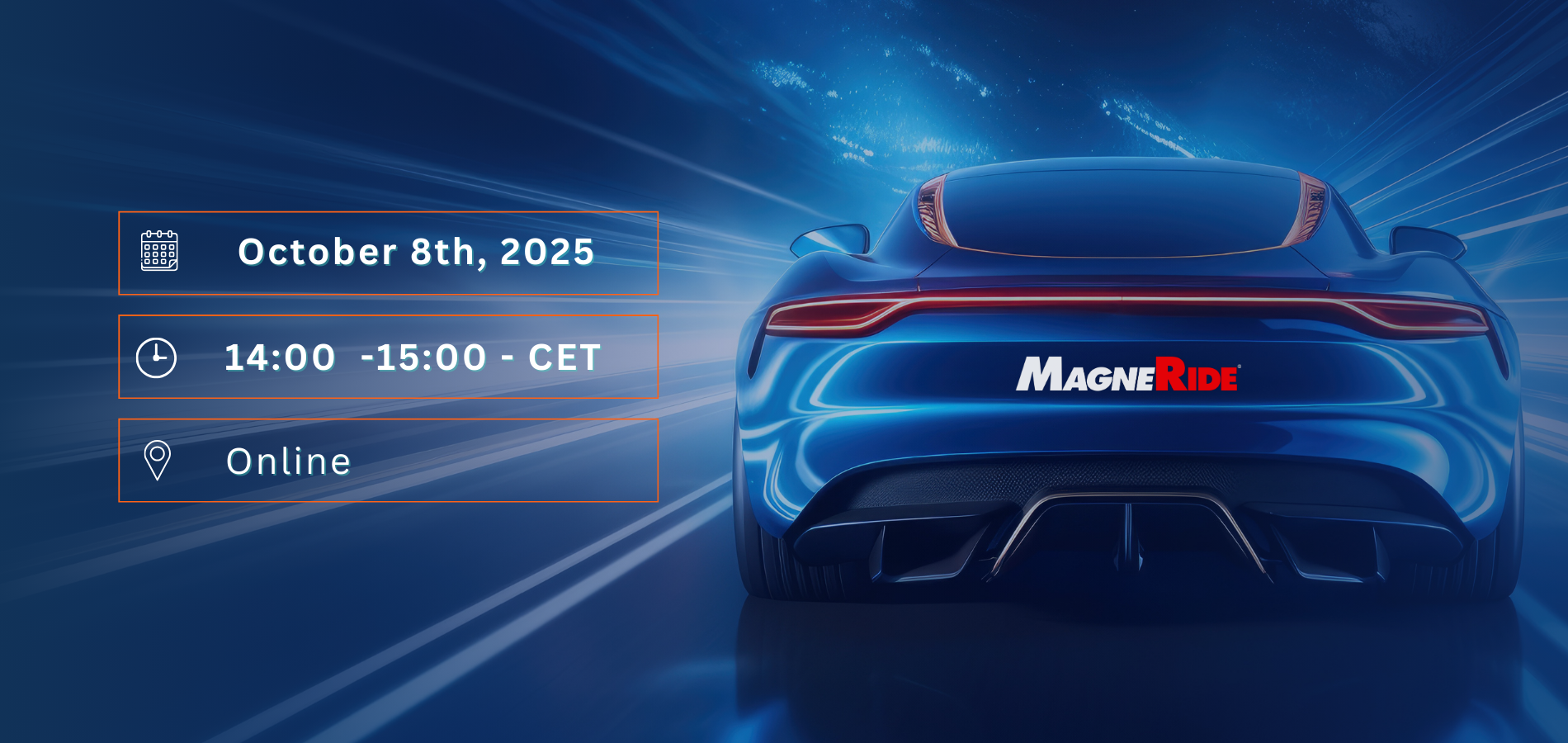For over 20 years, BWI Group Ride Engineer, Chris Goergen, has worked closely with leading global OEMs to bring MagneRide® to life on the road. Whether he’s fine-tuning high-performance sports cars or helping deliver premium comfort for the latest EVs, Chris plays a pivotal role in shaping how vehicles feel to drive. We caught up with him to discuss the unique strengths of MagneRide, how BWI Group’s collaborates with customers, and why tuning suspension is as much about feel as it is about technology.
Q: What does your role as a ride engineer at BWI Group involve?
My focus is on helping OEMs get the very best performance from their MagneRide systems. I work directly on vehicles, collaborating with the customer to integrate our technology into their architecture and calibrate it to their specific requirements. That includes working with software, hardware and control parameters to ensure the system supports the vehicle’s overall ride and handling objectives. Once the system is fully integrated, we move into fine-tuning, typically through subjective evaluation, to bring out the character the customer wants in the vehicle.
Q: How has that relationship with OEMs changed over time?
Vehicle development has evolved significantly, and so has our approach. We’ve adopted a more modular system that gives customers flexibility depending on their programme needs. We can supply a complete MagneRide system, including the dampers, sensors, ECUs and software, or just the individual components that are required. Some customers want full system delivery and tuning support, while others prefer to embed our control algorithms into their own ECUs.
This modular approach breaks down barriers to entry and enables us to adapt to a wide variety of vehicle architectures. Our engineers work closely with customers to determine the best integration strategy. As systems become more centralised and software-defined, we’re acting less like a component supplier and more like a technology partner.

Q: What does a typical tuning session look like for you?
Each project starts with integrating MagneRide into the customer’s system architecture. That means aligning our software with their control environment and ensuring everything communicates seamlessly. Once the system is operational, we begin the calibration process, adjusting control parameters to match the desired ride and handling characteristics.
From there, we focus on refining the system through real-world testing. This includes evaluating ride comfort, body control, noise and vibration levels, and overall vehicle dynamics. Our role is to help the customer achieve their targets efficiently, whether that’s sharp handling for a performance model or enhanced comfort in an electric SUV.
Q: What makes MagneRide different from other semi-active suspension systems?
The key difference is how the damping force is controlled. Traditional semi-active systems use solenoid valves, which often require physical hardware changes during development. That means manufacturing and swapping out multiple sets of valves to refine the tuning. This is time-consuming and resource-intensive.
With MagneRide, we don’t need to change any hardware during tuning. The damping force is controlled digitally via software, so I can make changes directly from my laptop. This gives us much more agility in development, reduces costs, and speeds up the entire calibration process.
Q: MagneRide is often praised for its fast response time. What does that mean for ride quality?
MagneRide can respond in just a few milliseconds, which allows us to precisely control both primary ride (body movement) and secondary ride (wheel control). On challenging road surfaces, such as uneven country roads, this responsiveness makes a big difference. We can maintain strong body control without compromising comfort or introducing harshness from the wheels. Other systems often reach a point where they have to increase damping to control the body, but that can lead to an overly stiff ride. MagneRide gives us the flexibility to balance both.
Q: Does that also help when tuning different vehicle types?
Absolutely. MagneRide is well known for its performance in sports cars, but it has been improved to be more capable in comfort-oriented vehicles too. In fact, it’s already in use in many of today’s premium EVs and SUVs, where ride quality and noise suppression are critical. Its fast reaction time and wide tuning range allow us to deliver a refined, composed ride even on rough surfaces. That adaptability is what makes it so valuable across different segments.
Q: How has MagneRide evolved since you started working with it?
The system has become faster, more refined and even more integrated. One of the biggest areas of improvement has been secondary ride and how we manage small, high-frequency road inputs. When it comes to body control, earlier generations already outperformed conventional suspension , and we’ve continued to improve response time, NVH characteristics and overall comfort. We’ve also enhanced the system architecture, updating the sensors and ECU to support modern vehicle platforms.
Q: Looking ahead, what’s next for MagneRide?
As EV adoption increases, expectations around noise and ride quality are rising. Without engine noise to mask imperfections, every bump and vibration becomes more noticeable, and the added mass of EVs makes controlling body motion more challenging. At the same time, the shift towards software-defined vehicles is accelerating the need for digitally controlled suspension systems that can be easily integrated and updated. This is where advanced semi-active systems like MagneRide are playing an increasingly vital role.
We’re also working to bring MagneRide to a broader range of vehicles. That means improving affordability and increasing volumes, but without compromising the performance that makes it unique.
Q: What do you enjoy most about your work?
Every project is different, and I get to work on vehicles all over the world. The multicultural aspect of working with Italian, German, American, English, Chinese and Japanese engineers, for example, is always interesting. And of course, being in the car, feeling the difference our work makes, is incredibly satisfying. But it’s never just one person. What I do wouldn’t be possible without the engineering teams behind me. It is the team that writes the code, tests the software, designs and manufactures the parts. It’s very much a team effort, and I’m proud to be part of that.
Note to editors:
To find out more about BWI Group’s MagneRide technology, the company is hosting a webinar on October 8th. It will explore the future of semi-active suspension and its role in modern vehicle performance and provide a detailed technical overview of the latest generation of MagneRide technology. The webinar will also offer insights into how the MagneRide system is engineered for scalable integration across multiple vehicle types and architectures and provide a look inside BWI Group’s manufacturing facility.
To register for the event, click here: https://mobex.io/webinars/digitising-chassis-systems-upgrading-semi-active-suspension-systems-for-modern-vehicles/


